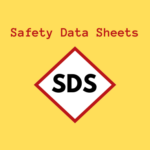Streamlining Warehouse Operations: The Benefits of Implementing a QMS Software

Introduction:
In today’s fast-paced business landscape, warehouses face increasing pressure to streamline operations, improve efficiency, and maintain high-quality standards. While some may opt to add more resources to handle manual processes, an alternative solution exists: implementing a Quality Management System (QMS) software. This powerful tool offers numerous advantages over traditional manual methods, such as shared drives and spreadsheets. In this article, we’ll explore the benefits of adopting a QMS software for warehouse management and highlight the advantages it brings to the table.
Streamlined Efficiency and Automation:
One of the primary benefits of implementing a QMS software in a warehouse setting is the streamlining of operations through automation. Manual methods like shared drives and spreadsheets are prone to errors, data discrepancies, and time-consuming processes. With a QMS software, routine tasks such as document control, non-conformance management, and audits can be automated, saving valuable time and effort. This automation not only increases efficiency but also reduces the risk of errors and inconsistencies, ensuring that quality processes are consistently applied throughout the warehouse.
Standardization and Consistency:
Maintaining consistency in quality processes is crucial for warehouse operations. QMS software provides a centralized platform for documenting and managing quality-related activities, ensuring standardization across the warehouse. By defining workflows, procedures, and templates within the software, employees can follow consistent practices, reducing variations in how tasks are performed. This standardization enhances overall operational efficiency, reduces confusion, and promotes a cohesive approach to quality management. Warehouse managers can establish clear guidelines and monitor adherence to ensure a consistent and reliable quality output.
Improved Data Management and Organization:
Effective data management is essential for warehouse operations, as it enables quick access to information, facilitates decision-making, and supports continuous improvement. QMS software offers a structured approach to data storage, retrieval, and analysis, eliminating the need for scattered spreadsheets or shared drives. With all relevant quality-related data stored in a single system, warehouse teams can easily find, update, and track information, improving data integrity, accuracy, and traceability. This centralized approach simplifies data management, reduces data duplication, and provides a reliable audit trail, ensuring that historical records and documentation are readily available when needed.
Enhanced Collaboration and Communication:
Warehouse operations rely on effective collaboration and communication among team members. QMS software provides features that facilitate seamless collaboration, allowing multiple users to work on documents simultaneously, track changes, and manage version control. This fosters real-time communication, coordination, and teamwork, enabling employees to work together efficiently. Whether it’s sharing feedback on non-conformances, collaborating on process improvements, or conducting audits, a QMS software promotes enhanced collaboration, ensuring that everyone stays on the same page and contributes to the continuous improvement of warehouse operations.
Conclusion:
In an era of evolving warehouse management practices, it is crucial to leverage technology that streamlines operations and ensures high-quality standards. Implementing a QMS software can deliver substantial benefits, ranging from automation and standardization to improved data management and enhanced collaboration. Among the QMS software solutions available, Trackmedium QMS stands out as a comprehensive and reliable choice. With its robust features for document control, non-conformance management, audits, and reporting, Trackmedium QMS empowers warehouses to optimize their quality management processes and drive operational excellence. By adopting a QMS software like Trackmedium QMS, warehouses can navigate the complexities of modern operations more effectively, while delivering exceptional quality outcomes to their customers.



















